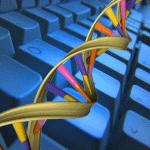Bioinformatics
|
28 august 2017 11:15:22 |
| Improved performance in CAPRI round 37 using LZerD docking and template-based modeling with combined scoring functions (Proteins: Structure, Function, and Bioinformatics) |
|
Tweet We report our group`s performance for protein-protein complex structure prediction and scoring in Round 37 of the Critical Assessment of PRediction of Interactions (CAPRI), an objective assessment of protein-protein complex modeling. We demonstrated noticeable improvement in both prediction and scoring compared to previous rounds of CAPRI, with our human predictor group near the top of the rankings and our server scorer group at the top. This is the first time in CAPRI that a server has been the top scorer group. To predict protein-protein complex structures, we used both multi-chain template-based modeling (TBM) and our protein-protein docking program, LZerD. LZerD represents protein surfaces using 3D Zernike descriptors (3DZD), which are based on a mathematical series expansion of a 3D function. Because 3DZD are a soft representation of the protein surface, LZerD is tolerant to small conformational changes, making it well suited to docking unbound and TBM structures. The key to our improved performance in CAPRI Round 37 was to combine multi-chain TBM and docking. As opposed to our previous strategy of performing docking for all target complexes, we used TBM when multi-chain templates were available and docking otherwise. We also describe the combination of multiple scoring functions used by our server scorer group, which achieved the top rank for the scorer phase. This article is protected by copyright. All rights reserved. |
| 116 viewsCategory: Biochemistry, Bioinformatics |
 How Fast Monoamine Oxidases Decompose Adrenaline? Kinetics of Isoenzymes A and B Evaluated by Empirical Valence Bond Simulation (Proteins: Structure, Function, and Bioinformatics) How Fast Monoamine Oxidases Decompose Adrenaline? Kinetics of Isoenzymes A and B Evaluated by Empirical Valence Bond Simulation (Proteins: Structure, Function, and Bioinformatics)Site-specific recombination of nitrogen-fixation genes in cyanobacteria by XisF-XisH-XisI complex: Structures and models (Proteins: Structure, Function, and Bioinformatics) 
|
| blog comments powered by Disqus |
MyJournals.org
The latest issues of all your favorite science journals on one page
The latest issues of all your favorite science journals on one page



